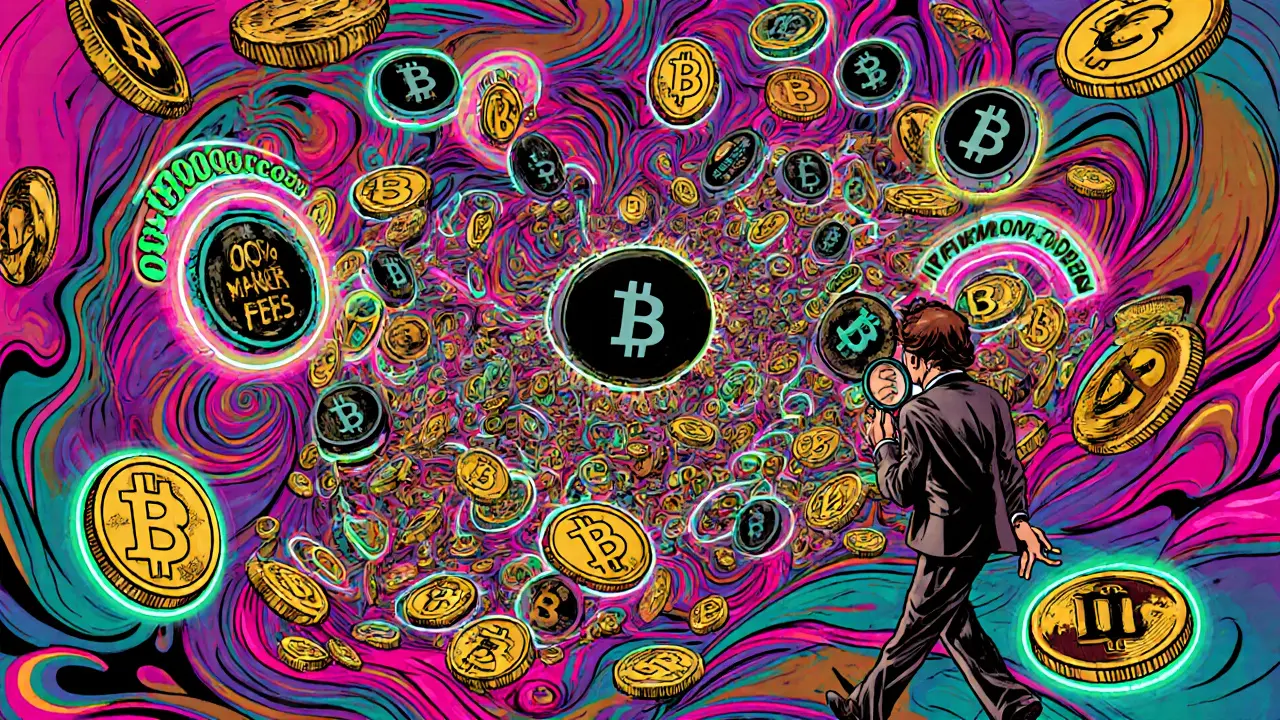MEXC Trading: What You Need to Know About This Crypto Exchange in 2025
When you hear MEXC trading, a global cryptocurrency exchange known for low fees and a large selection of altcoins. Also known as MEXC Global, it's one of the platforms where traders go to access coins not listed on bigger exchanges like Binance or Coinbase. But with so many options out there, why do people still use MEXC? The answer isn’t just about price—it’s about what’s available and who’s actually using it.
MEXC trading isn’t just another exchange. It’s built for users who want access to new tokens early, often before they hit major platforms. That’s why you’ll find hundreds of small-cap coins, memecoins, and DeFi tokens here that you won’t see elsewhere. But that also means risk. Many of these coins have no real team, no liquidity, and no future. If you’re trading on MEXC, you’re not just betting on price—you’re betting on whether the project survives the next month. That’s why knowing how to spot a dead token matters more than knowing how to place an order.
What makes MEXC stand out? Low trading fees, spot and futures trading in one place, and a simple interface for beginners. But it’s also got a reputation for being less transparent than top-tier exchanges. There’s no public audit history, no clear regulatory status in most countries, and no official support for users in places like the U.S. or EU. That’s not a dealbreaker for everyone, but if you’re serious about security, you’ll want to compare it with exchanges like Bybit or Kraken that have real compliance teams. MEXC trading works if you’re comfortable taking on extra risk for access to early-stage projects—but it’s not where you store your life savings.
Behind the scenes, MEXC relies on a mix of centralized infrastructure and liquidity pools to keep trades flowing. That’s why you’ll see tight spreads on popular pairs like BTC/USDT or ETH/USDT. But on lesser-known tokens, slippage can be brutal. One user reported a 15% price jump just from placing a $500 order on a low-volume coin. That’s not a glitch—it’s how the market works when there’s no depth. If you’re trading on MEXC, you need to understand order books, not just charts.
And then there’s the airdrop angle. MEXC has run its own token launches and airdrops, like the $MEXC token distribution in 2023. But those aren’t free money—they’re often tied to lock-up periods, trading volume requirements, or KYC. You’re not getting free coins. You’re paying with your time, your data, and sometimes your capital. The same goes for their staking programs. High APYs? Sure. But many of those tokens have crashed 90% after launch. You’re not earning yield—you’re gambling on a token that might vanish.
If you’re looking for a safe, regulated place to trade Bitcoin or Ethereum, MEXC isn’t your best bet. But if you’re hunting for the next memecoin or testing out a new DeFi project, it’s one of the few places that still lets you in. Just don’t assume it’s secure. Don’t assume it’s reliable. And don’t assume anyone’s watching out for you. The crypto world doesn’t protect you—your own research does. Below, you’ll find real reviews, warnings, and comparisons that cut through the hype. What you learn here could save you from a bad trade—or worse.
MEXC Crypto Exchange Review: Fees, Tokens, and Why It’s a Top Choice for Altcoin Traders
MEXC is a top crypto exchange for altcoin traders with zero maker fees, over 2,800 tokens, and early access to new listings. Not for U.S. users, but ideal for global traders seeking low costs and high variety.
